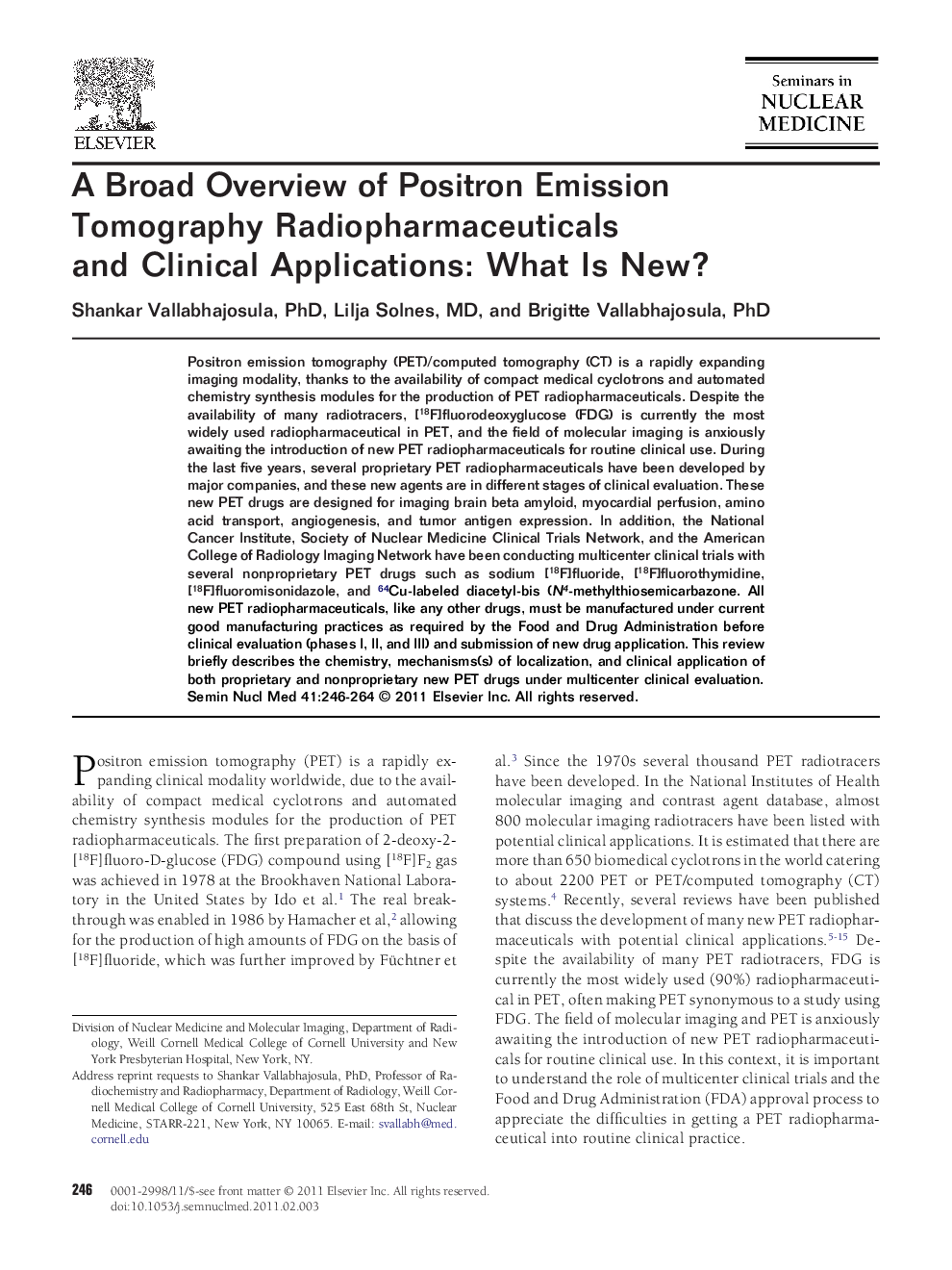| Article ID | Journal | Published Year | Pages | File Type |
|---|---|---|---|---|
| 4251352 | Seminars in Nuclear Medicine | 2011 | 19 Pages |
Positron emission tomography (PET)/computed tomography (CT) is a rapidly expanding imaging modality, thanks to the availability of compact medical cyclotrons and automated chemistry synthesis modules for the production of PET radiopharmaceuticals. Despite the availability of many radiotracers, [18F]fluorodeoxyglucose (FDG) is currently the most widely used radiopharmaceutical in PET, and the field of molecular imaging is anxiously awaiting the introduction of new PET radiopharmaceuticals for routine clinical use. During the last five years, several proprietary PET radiopharmaceuticals have been developed by major companies, and these new agents are in different stages of clinical evaluation. These new PET drugs are designed for imaging brain beta amyloid, myocardial perfusion, amino acid transport, angiogenesis, and tumor antigen expression. In addition, the National Cancer Institute, Society of Nuclear Medicine Clinical Trials Network, and the American College of Radiology Imaging Network have been conducting multicenter clinical trials with several nonproprietary PET drugs such as sodium [18F]fluoride, [18F]fluorothymidine, [18F]fluoromisonidazole, and 64Cu-labeled diacetyl-bis (N4-methylthiosemicarbazone. All new PET radiopharmaceuticals, like any other drugs, must be manufactured under current good manufacturing practices as required by the Food and Drug Administration before clinical evaluation (phases I, II, and III) and submission of new drug application. This review briefly describes the chemistry, mechanisms(s) of localization, and clinical application of both proprietary and nonproprietary new PET drugs under multicenter clinical evaluation.
